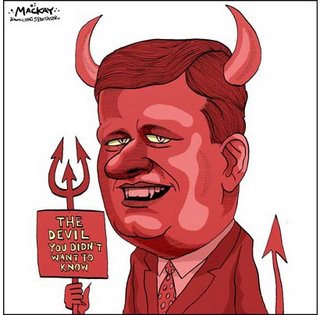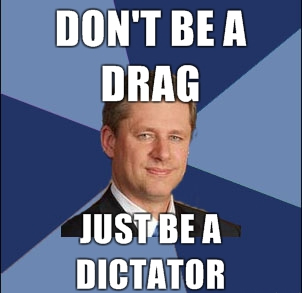The Daniels decision hasn’t been out for 24 hours yet and already there is mass confusion about what it does and does not say. Despite the buzz in mainstream and social media, it does NOT make Metis and non-status Indians “Indians” under the Indian Act. The case also does NOT give Metis and non-status Indians any “rights”. This wasn’t a case about hunting or fishing. So, for all the emails, Facebook messages and inquiries I have received from people asking if I can help them become registered (status) Indians or whether they can get free education now – this case does not do that. While the case itself was an important one, the actual decision imported more problems than it resolved.
It was a case designed specifically to answer the question about whether Metis and non-status Indians are included in the definition of the term “Indian” in section 91(24) of the Constitution Act 1867 (also referred to as British North America Act). The Supreme Court of Canada’s (SCC) answer was “yes”.
Sections 91 and 92 of the Constitution Act 1867 set out the jurisdictional powers of the federal and provincial governments. Jurisdiction means an authority or power over a certain area. Generally, it does NOT create a legal obligation to act or legislate in that specific area. These individual areas of jurisdiction are referred to as “heads of power”. For example, the federal government has jurisdiction over things like criminal law, divorce law, banking and the military. The provinces have powers over hospitals, charities and taverns. The head of power at issue in this case is section 91(24) Indians and lands reserved for the Indians.
It should be remembered that this is NOT the first SCC case on what the term “Indian” includes under section 91(24). In 1939, the federal government and province of Quebec sought clarification from the court as to whether the term “Eskimo” now referred to as “Inuit” was included in the term “Indian”. In that case, the court used historical documents to demonstrate that while the Inuit were unique, they were considered to one of many “tribes” of Indians. As a result, the Inuit are considered “Indians” for the purposes of section 91(24) federal jurisdiction. This did NOT mean that all Inuit were registered as Indians under the Indian Act. In fact, section 4(1) of the Indian Act specifically states:
4(1) A reference in this Act to an Indian does not include any person of the race of aborigines commonly referred to as Inuit.
The term “aborigine” is not defined in the Indian Act, but commonly refers to an indigenous person of a particular territory or country –the original inhabitants. The question now is whether Canada will make Metis and non-status Indians a new group of “aborigines” to be specifically excluded from the Indian Act, like the Inuit.
Just because Metis and non-status Indians have been recognized as “Indians” for the purposes of section 91(24) of the Constitution Act 1867, this does not mean that they will ever be included in the Indian Act or registered as Indians. Nor does it mean they will get a house on reserve, be considered treaty beneficiaries, or access any other legal entitlement. Inuit do not live on reserves nor are they considered First Nations. It is unlikely that the federal government will put Metis on reserves either.
Remember, it is not the Indian Act that sets out rules and regulations around “benefits” or “rights”. Whether or not Indian and Northern Affairs Canada (INAC) grants a benefit or decides to recognize a legal right is a matter of policy – i.e., a government decision made at Indian and Northern Affairs Canada (INAC) usually in consultation with Justice Canada, Treasury Board, the Prime Minister’s Officer and/or various other interested departments like Fisheries and Oceans (if related to fishing right for example).
Despite the fact that many of our rights are LEGAL rights protected by Indigenous laws, treaties and agreements, as well as domestic and international laws – most often the government lumps all “Indian” issues into generic policies that may not reflect the extent of our legal rights at all. In fact, Canada’s most common legal argument is that any “benefit” provided to Indians is out of the good will of the government (a matter of policy) and not out of any legal obligation. This is what the SCC referred to as “noblesse oblige” where the government mistakenly thinks that Indigenous rights are a matter of charity or generosity versus legal obligation.
What this case will do is break through the jurisdictional “limbo” to which Metis and non-status Indians have been relegated and force both federal and provincial governments to include Metis and non-status Indians in their consultation activities. While the court did not grant 2 of the 3 requested declarations, it DID confirm that governments have a fiduciary duty towards Metis and non-status Indians (duty to act in their best interests), AND that they must negotiate with them and consult with them on decisions impacting their rights.
That is the most neutral thing that I can say about this decision. In EVERY other way, this decision is one of the worst messes to come out of the SCC. While it may sort out who is an Indian, it does nothing to address the problems faced by Indians in accessing various federal programs and services. Remember, Jordan River Anderson was a registered Indian child, under federal jurisdiction, yet the province and federal government BOTH refused to pay for his health services and he died in hospital never seeing his home. Magically becoming an Indian doesn’t resolve the ongoing federal-provincial dispute over coverage for individuals living OFF reserve, let alone those normally resident on reserve.
On the Indigenous rights front – inherent, Aboriginal and treaty rights – this case is damaging.
To my mind, the Daniels decision is less about reconciliation and more about erasure of Indigenous sovereignty and identity. It takes John Ralston Saul’s idea of “we are all Metis people” together with the newest Canadian slogan “we are all treaty people” and opens the floodgates to every person in Canada claiming a long lost Indian ancestor and asserting their identity and control over our lands and rights. It has the potential to effectively eliminate any real sovereignty or jurisdiction Indigenous Nations have over our own citizens and territories. It does not bolster Metis claims, but instead confuses them. It does not address the discrimination faced by actual non-status Indians, but paints them with the Metis “mixed people” brush. The very unique and specific circumstances of non-status Indians are completely over-looked in this decision.
We have gone from sovereign Indigenous Nations – to one generic group of Indians – to distinctions-based groups (Indian, Inuit and Metis) – and now back to Indians – all for the express purpose of reducing us to an “interest group” of “Aboriginal people”. This is not good for anyone. Certainly, no one asked us what we thought. Once again, National Aboriginal Organizations are at the helm – directing the pirate ship to ensure they get their cut of program funds for their organizations. Their win is big – they’ll likely get increased funding to set up new negotiating tables. For the Indigenous Nations on the ground – a new burden has been placed on us – proving that the thousands of newly-minted, self-identified “Indians” do NOT speak for us and do NOT have a say over our lands. For those who have been wrongly excluded by government laws policy (like Indigenous women and their children) – their new challenge will be to distinguish themselves from the floodgate of false claims to come – a burden not rightly borne by those who have already suffered so long at the hands of government discrimination.
This decision, taken together with Trudeau’s White Paper 2.0 (the nice version), means we have many battles ahead. Please read this decision critically – don’t partake in the celebrations just yet.
http://scc-csc.lexum.com/scc-csc/scc-csc/en/item/15858/index.do



